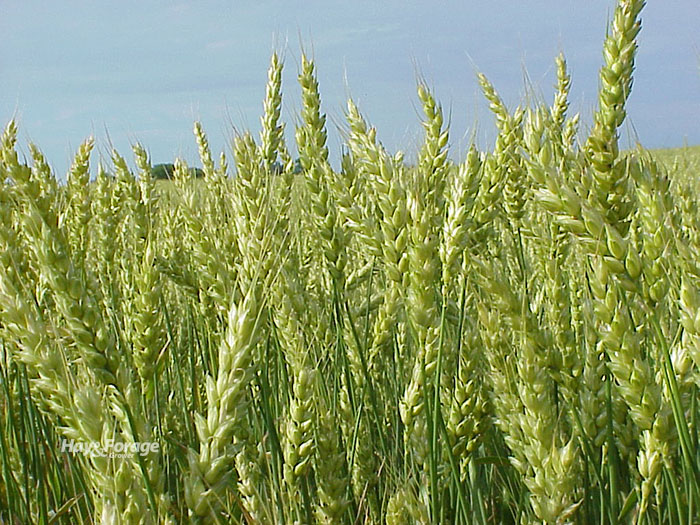Drought-stressed cereals still have value |
| By Amber Friedrichsen, Associate Editor |
|
|
 Hot, dry weather conditions are taking a toll on crop fields in the Upper Midwest – not to mention many other parts of the country. In these heat-stricken regions, producers are facing two challenges: drought-stressed grains and under-producing forages. Instead of losing both crops, it may be in a farmer’s best interest to sacrifice one to make up for the other. According to extension specialists with North Dakota State University and the University of Minnesota, it makes sense to harvest small grains as forage in places where grain yield potential is past the point of no return. Setting the stage Small grains are similar to forages in that their quality declines with maturity. At this point in the growing season, most crops are at or beyond boot stage. Harvesting grains as soon as possible is the best way to ensure the highest quality if they are going to be used as a forage. Conversely, if tonnage is top of mind, waiting until small grains reach dough stage before harvesting can be beneficial. However, Jochum Wiersma points out that yield will not improve if drought conditions persist. “If small grains are severely drought-stressed and withering away, additional biomass will not accumulate without additional moisture,” states the University of Minnesota extension agronomist. No matter the primary goal, the first thing to do before harvesting small grains as forage is consult with crop insurance providers. Jared Goplen, University of Minnesota Extension crop educator, points out that there are rules to follow if producers want to receive the support available to them. “There are provisions related to harvesting drought-stressed crops as forages,” he says. “To ensure crop insurance payments, you need to provide a notice of loss to your insurance provider and get those acres released.” Nitrate concentrate One of the biggest concerns of harvesting small grains as forage is high levels of nitrate, which can lead to nitrate poisoning if fed to livestock. Zach Carlson with North Dakota State University explains the college’s Nitrate QuikTest. Extension agents conduct this test in a field of standing crop and use a screening tool to determine nitrate levels prior to cutting. If this is not a feasible option, Carlson suggests small grains be collected, submitted, and tested for nitrate content. The extension beef specialist instructs farmers to provide a representative sample with at least 20 stems. Gather the stems by travelling in a zigzag pattern across the field and clipping plants at ground level. Nitrate levels will likely decline as small grain crops mature. But the longer these plants are exposed to drought conditions, the greater their leaf loss potential becomes. Lower leaves on small grains will dry out and be destroyed at harvest, weakening quality and yield. Harvesting options Small grains can be harvested for dry hay if nitrate levels are low, and this hay can be baled if the grains are dry enough. Using a conditioner will expedite the drying process, but the extension specialists warn producers of greater shattering loss when using conditioners in hot, dry weather. Small grains can also be harvested and stored as silage, which is preferred if high nitrate content is a concern. Goplen says this strategy can reduce levels by 30% to 70%. The extension specialists recommend chopping small grains at 60% to 70% moisture. Drought-stressed fields may already be below this point, though, so direct chopping in these conditions is best. Before piling or bagging silage, oxygen needs to be omitted from the crop as much as possible. Small grains have hollow stems that can cause challenges in eliminating oxygen. Goplen advises farmers how to cut, store, and feed their crop effectively. “Using a shorter cut length of 3/8 to 1/2 inch will assist with packing, whereas insufficient packing will result in greater storage losses,” Goplen informs. “Allow a fermentation period of at least 21 days before feeding.”  Amber Friedrichsen Amber Friedrichsen is serving as the 2021 Hay & Forage Grower editorial intern. She currently attends Iowa State University where she is majoring in agriculture and life sciences education-communications with a minor in agronomy. Friedrichsen grew up on her family’s diversified crop and livestock farm near Clinton, Iowa. |
